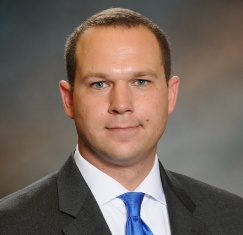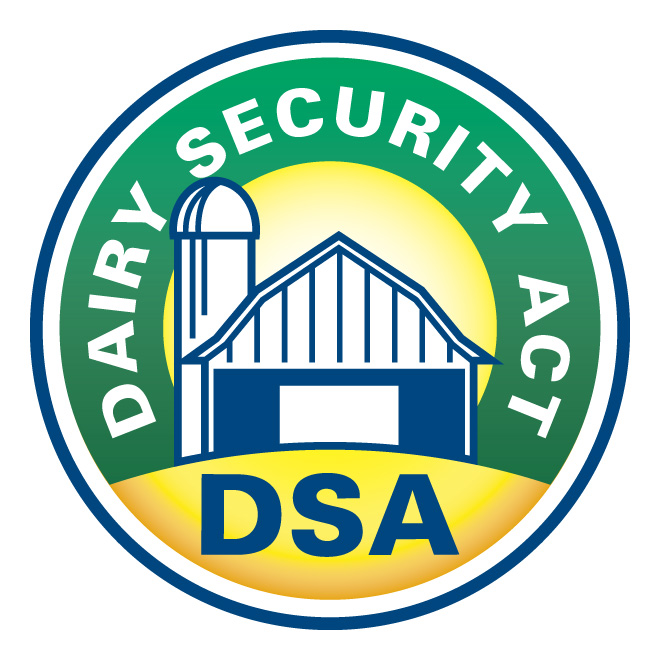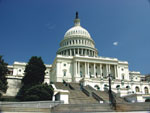For the November CEO’s Corner, we have included the presentation that was made November 13th, 2013 by Chief Operating Officer Jim Mulhern at the NMPF annual meeting in Phoenix, AZ. Mulhern will take over as NMPF’s chief executive when Jerry Kozak retires at the end of this year.
NMPF Incoming President & CEO Jim Mulhern Annual Meeting Speech
Thank you very much, Jerry. Good morning ladies and gentlemen. Let me first say how pleased I am to be here, to have the honor of taking the reins of this great organization and lead us forward at this important time in our industry’s history.
Jerry, to you I want to express my deep appreciation for the support and guidance you have provided through this transition period. From you I inherit a strong legacy of leadership and a solid foundation for the future. I pledge to build on that record of success as we face the many new challenges that lay before us in the years ahead.
Randy, I am very excited by the opportunity to work closely with you in guiding our organization forward. I’m looking forward to building on the strong relationship we’ve already established. And I want to thank you and the Board of Directors for your faith and confidence in me as the new President and CEO of National Milk.
As many of you know, this isn’t my first dance here. I initially worked for this organization as a young, 20-something soon after I first came to Washington. A few years have passed, and yet I’m here again because I firmly believe in the mission of this organization and the goals and aspirations of its members. There is no greater honor for me than to work on your behalf, to advance the interests of dairy farmers and the cooperatives you own. My professional career has always kept me close to the dairy producer community – and it has paved the path leading me back to NMPF.
I now have a great opportunity to leverage the learning experiences of my career in agricultural policy, harnessing the hope that we can make this an even better organization in the future.
What I’d like to do this morning is outline my vision for NMPF, and the challenges before us, and talk about how the changes I’ve seen in the past three decades inform my perspective on where we need to go in the future.
So what’s changed since I first worked at NMPF in the mid-80s? Back then, we were talking about the need to fix the government dairy safety net…just as we are doing today with the farm bill’s Dairy Security Act. Back then, we were engaged in trade policy negotiations with high stakes for dairy farmers… just as we are today. Back then, we saw the value of the use of an industry-devised standard of identity, called the REAL Seal… which we’re now bringing back, although we aren’t going to resurrect the late great Vince Price as our spokesman. And back then, Washington was the home of a House controlled by one party that strongly opposed policies put forth by the President, who represented the other party. Sounds a lot like today.
However, if we dig beneath the historical headlines and the armchair analysis, we’ll see that much has changed, both in Washington and in our industry. While many of the changes at NMPF have been for the better, the same cannot be said for the changes in Washington, DC.
We as dairy producers are more united than we have been at any point in my career. But unfortunately our government in Washington seems more divided than it has ever been. Congress is in gridlock — witness the inability to pass a farm bill or a budget, or immigration reform, or much of anything else for that matter.
But here’s the key insight about our world, whether in 1983, or 2013, or the years ahead: Things change. Nothing stays exactly the same. History has familiar patterns and echoes, but time marches on.
Now, we can either be driven by the changes we see around us, most of which are beyond our control. Or, we can help drive those changes, expanding our reach toward those near our grasp, by positioning this organization as a resource for its members, now and in the future. That’s a great opportunity. And I know we can work together to seize it. But it will entail effort and commitment – engagement from each of you – along the way.
So, what I’d like to do is outline where we must commit this organization and this industry, and then address some of the things that will be needed to help get these jobs done.
Let me start with the area that always has been and always will be a core purpose of NMPF, and that is helping farmers economically. We are still in the middle of a pitched battle on this matter, as Congress decides whether to pass the Dairy Security Act, with both margin insurance and market stabilization…. or, to adopt a costly, ineffective and, frankly, counter-productive imitation of the DSA that some dairy processors want.
Because the stakes are high, we have fought hard to get this policy right. We will continue that fight until the end. And we intend to win.
Once we get through this process and have a farm bill that establishes an effective safety net, we will then be in a position to tackle the other key component of dairy economics, and that is the system of classified pricing we use in the U.S.
In particular, we must turn our attention again to discussions aimed at reforming the federal milk marketing order system. This was originally part of the Foundation for the Future initiative, but for many reasons, it fell by the wayside. But reforms delayed cannot be reforms denied. As important as it is for us to get a workable safety net in the farm bill, it’s equally important to address some of the challenges in federal orders, from end product pricing to make allowances.
The good news is we don’t have to start from scratch; the work done previously gives us a leg up on how to make this happen. It won’t be easy, but it will be a priority going forward.
But let’s also be clear: any changes to the federal order system have to benefit the nation’s dairy farmers. Some dairy processors talk about reforming federal milk orders, when what they really seem to mean is increasing their control of the market and their share of the dairy dollar. That’s a non-starter for us.
Our focus will be on reforms needed to ensure the orderly marketing of milk, and to protect the financial interests of the nation’s dairy farmers.
On a related note, in recent times we have heard a continual drumbeat from some of our colleagues in the processor community calling standards of identity for dairy products the great barrier to a brighter future.
But it’s important to listen closely to what’s being said. Sometimes this talk is being delivered by those who don’t seem to fully understand the concept of standards of identity. Other times it’s from those who actually do understand, but are looking for a way to benefit financially through deviations marketed as “innovation.”
One recent example comes to mind. A prominent marketer of fluid milk attempted to patent a lower-calorie alternative to skim milk called “light milk.” This product sought patent protection through the addition of a novel low-calorie ingredient. What was this novel ingredient? Something known as dihydrogen monoxide. That’s right: Water.
In years past, dairymen who added this same novel ingredient to their milk on the farm have, appropriately, gone to jail. But when it’s a processor proposing it, it is somehow innovation. Fortunately, the requested patent was turned down.
Beyond that, we continue to see situations where the processing community seems unaware of the legitimate flexibility already permitted under existing standards. When you combine this lack of understanding with the unfortunate tendency to confuse standards of identity with definitions under classified pricing — the result is predictable: Let’s Get Rid of These Restrictive Standards! Well, let’s not!
Are there provisions of standards that could be improved? — absolutely, especially if they relate to improvements and efficiencies in plant-level processing technologies. And we are willing to explore them. However, National Milk will not agree to revisions to standards designed to “water down” (pun intended) their quality or deceive consumers, and we will continue to work diligently to preserve all aspects of standards that preserve the integrity of traditional dairy products, their names and their composition.
But let me also be clear: we have much more in common than we have in difference with our friends in the processing community. We must and we will work closely together to accomplish what’s in the best interest of the entire dairy industry. For us, the focus must be on growing the pie, not re-dividing the existing pie.
It’s all about finding a win-win, and preventing win-lose scenarios.
Let me turn briefly to another economic issue that has become critically important to our industry, and will only grow in importance, and that is trade policy. Those of you in yesterday’s Town Hall meeting heard that we are at a critical juncture regarding the Trans-Pacific Partnership agreement. We need greater access to Canada, and also Japan, in order for a TPP agreement to be useful to America’s dairy farmers. We also need reforms of Fonterra as part of the deal.
On the other side of the world, the Trans-Atlantic Trade deal also offers potential new opportunities as well as challenges. Any eventual agreement has to create a more level playing field between the US and the EU, particularly when it comes to market access.
In addition, it must not in any way disrupt our ability to use the same cheese names that we have used for well over a century. The European Union’s effort on “geographical indicators,” the latest in a long line of schemes to establish non-tariff trade barriers, cannot be allowed to stand. Our government must not allow Europe to selfishly claim the exclusive use of common food names in a way that hobbles our ability to meet future consumer demand here in the U.S., in Europe, or anywhere else.
Beyond the importance of strong, workable trade agreements that break down barriers and increase market opportunities, we also must aggressively continue our efforts to grow market share through our investment in Cooperatives Working Together.
CWT is an important tool in our trade arsenal. This self-help program is providing real economic benefits to farmers and our cooperatives, and it also helps us tell a positive story about how we are working together and pooling our resources for the collective betterment of our industry.
You can see on this slide how important CWT is in helping us export cheese and butter. The value of this cooperation – the benefits it provides to all dairy farmers — must not be underestimated.
Shifting gears to another area of emerging concern, let me highlight the need for an increased focus on environmental issues. It’s yet another area where we have to play both offense and defense.
From a proactive standpoint, we’re working collaboratively with our partners at DMI and the Innovation Center to maximize the value of all of the great work being done on sustainability. Dairy is at the forefront of all the agricultural commodities when it comes, not just to measuring our carbon footprint, but also taking steps to reduce it. That’s yet another positive story to tell. It’s important to the food marketing value chain, and it’s also important when we speak on Capitol Hill, and with regulatory agencies. Too many people mistakenly view livestock agriculture as a problem. But with our long history of dairy stewardship and our increased focus on sustainability efforts, we can, and are, positioning ourselves as part of the solution.
At the same time, we also have to recognize that environmental issues, be they regulations or litigation, are a reality now, and will only grow in importance in the future. That’s why we had a special panel on the topic at yesterday’s town hall session.
We are engaged in two different, yet precedent-setting challenges: one the result of litigation in Washington’s Yakima Valley; the other the result of regulation of the Chesapeake Bay watershed. Add to those the court challenges affecting the vast Mississippi River watershed, and you begin to understand the complexity of the challenge. These will be long-term contests requiring new approaches, perhaps new technologies, and the commitment of resources across the industry, so that farmers on the East and West coasts, and everyone in between – continue to have the license to operate freely, and responsibly.
Yet another issue that will be increasingly important going forward is making sure we shape federal nutrition policy to reflect the tremendous nutritive value of milk and dairy products.
Let us never forget that, when all is said and done, it is dairy’s important contribution to the human diet that sets our product apart. We offer Americans, and consumers around the world, affordable, high quality proteins and other key nutrients essential for human health. But we can’t rest on our past.
We must regain dairy’s place on the nutritional high ground. We can’t assume that policymakers who write the rules for the school lunch program, and the WIC program, and the SNAP program, will compose future regulations that recognize dairy’s unique nutrient package.
One big change during my career in dairy is that we’re in a much more competitive environment. We’re competing with other sources of calcium and vitamins featured in products that didn’t exist 10 or 20 years ago. We’re competing against vegan activists who hide behind innocuous-sounding organizational names, and treat fiction as fact in their quest to end animal agriculture.
Working with the National Dairy Council and other nutrition organizations, we must defend our franchise and promote the message that children, indeed, people of all ages, benefit from what dairy contributes to our diet.
These are just some of the areas where we must place increased emphasis going forward into the future.
Let me talk about one other factor influencing our society and, ultimately our industry, and how it will shape the role and mission of NMPF. And that is the need for more active engagement by all of us in the dairy industry to tell our story — it’s the need for openness and transparency. In the information age we live in, there is an expectation about communicating how things happen. Today’s world is more globalized. Hierarchies have been flattened, and technology has empowered people to speak out – and in that speaking, they have new expectations about being heard, and being engaged in a dialogue. This may sound abstract, but the impact on our business is very real.
Look at how food marketers have increased the flow of information about their products. 20 years ago, it was calorie and nutrition information on the back panel. 10 years ago, it was absence claims about artificial sweeteners and growth hormones. And now, it’s whether a product is locally and sustainably produced. Whether it can be traced back from the store to a field or barn. Why farmers are being featured more on packages and in marketing campaigns.
That’s transparency in action. But it can also be manipulated. And that’s one reason why we must more actively engage.
The strategy of some food companies is to try to increase sales by scaring consumers into paying more for their particular product because of how it wasn’t produced. That’s not transparency. That’s fear-based marketing. We have to combat that. Left unchecked, it not only affects the marketplace; it also affects the policy environment.
We must tell our story because if we don’t, others – who don’t have our interests at heart – are telling a very different, and harmful, story. So transparency is the need to tell stories about brands and product categories and entire industries. The clean lines that used to exist between farmer and processor and distributor and retailer have blurred. Transparency has created a value chain where everyone is accountable for what they do, and why they do it. This dynamic is part of the reason why we need a renewed commitment to the REAL Seal program.
It helps us illustrate – literally, on our packages – illustrate the story about real dairy foods.
This dynamic is why we need additional support and commitment to our national dairy animal care program — the FARM program.
It helps us explain to an increasingly interested and engaged public what happens on our farms – and why — before the milk ever reaches store shelves or restaurant tables.
This dynamic is why we need more farmers involved in using the tools of transparency, especially social media channels, to talk about what they do and why they do it, and to challenge in a respectful way all the myths that abound in the public square about dairy farming today.
This dynamic is why I applaud the great work Tom Gallagher and our partner organization DMI is doing to address these very challenges in the consumer marketplace. Our two organizations have a strong history of working together on behalf of our dairy farmers members. And I am very much looking forward to building on that success and taking it to a new level.
And this dynamic is why we need even more active engagement of dairy farmers in the policymaking process. To be successful in the future, we must be better able to enlist our co-op producer members in grass roots action.We must adopt the communication strategies and tools of the 21st century to drive our message home.
30 years ago, National Milk, like many organizations, could be a neatly-defined hierarchy, and be successful. It could function as a narrow organization, with a Board of Directors and a small staff, operate somewhat opaquely, and yet be effective in driving home a uniform message, on Capitol Hill, in the media, and across the dairy sector. But not anymore.
The forces of transparency mean organizations can’t be successful if they remain opaque and narrow, and function as if in a vacuum. Information flows much more quickly and freely, and every stakeholder wants a piece of it. As a result, the future of this organization, and this industry, belongs to those who are engaged in it.
If there’s a message I can leave with you today, it’s that the future of NMPF is not a function of what I want, or what Randy wants, or any one leader.
Rather, the successful future of NMPF will be a function of the active engagement that our Board, our delegates, and, yes, our grass roots members, have in the organization and the industry. It’s not merely about having names on our letterhead. We need voices, your voices, in the media, on the web and on Capitol Hill. We need your financial commitment, yes; but even more importantly, we need your time and effort and engagement. The more engagement our members have with our organization, the more our organization can achieve for our members. It’s a virtuous circle.
Working together we can accomplish so much. We can establish an effective safety net for all dairy farmers. We can improve the effectiveness of federal milk orders. We can ensure that US trade policy helps protect and promote our industry’s interests. We can address environmental concerns AND maintain our freedom to operate. We can improve dairy’s standing in nutrition policy discussions.
And working together, communicating our message together, we can make sure consumers know that the dairy products coming from milk produced on our farms is not only safe and wholesome…it is the best and highest quality milk in history.
I look forward to engaging with all of you as we work together to accomplish all these things, and more.
Thank you.
 NMPF announced last month that John Hollay (left) has been promoted to the position of Vice President of Government Relations, effective immediately. Hollay joined the organization in May 2012 as Director of Government Relations, and was promoted to Senior Director in the summer of 2012.
NMPF announced last month that John Hollay (left) has been promoted to the position of Vice President of Government Relations, effective immediately. Hollay joined the organization in May 2012 as Director of Government Relations, and was promoted to Senior Director in the summer of 2012.
 From Jim Mulhern, Chief Operating Officer, NMPF:
From Jim Mulhern, Chief Operating Officer, NMPF:
 From Jim Mulhern, Chief Operating Officer, NMPF:
From Jim Mulhern, Chief Operating Officer, NMPF: The 2013 farm bill inched forward in September and seemed headed for a House-Senate conference committee until the Congressional agenda was hijacked by major fights over the budget and raising the limit on the national debt. Little more is likely to happen until those two issues are resolved at some point in October.
The 2013 farm bill inched forward in September and seemed headed for a House-Senate conference committee until the Congressional agenda was hijacked by major fights over the budget and raising the limit on the national debt. Little more is likely to happen until those two issues are resolved at some point in October. The suggestions are in, and the nominees are: Dairyus, Milkdrop, and Roscow. Now it’s up to you to pick one of those three as the name for the new REAL® Seal animated cartoon character.
The suggestions are in, and the nominees are: Dairyus, Milkdrop, and Roscow. Now it’s up to you to pick one of those three as the name for the new REAL® Seal animated cartoon character.



